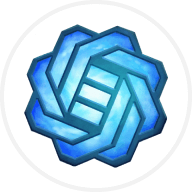In the rapidly expanding landscape of cryptocurrency, a new genre known as GameFi has emerged, offering players thrilling and immersive gaming experiences with the added opportunity to earn rewards. Among the multitude of platforms in this space, Aavegotchi (GHST) stands out as a leading contender, providing a unique and engaging gameplay experience that has captivated the attention of gamers and crypto enthusiasts alike.
What is Aavegotchi
Aavegotchi is a non-fungible token (NFT)-based game that merges the worlds of gaming and decentralized finance (DeFi). Built on the Polygon network and accessible through various web browsers, Aavegotchi offers an immersive experience where players can deploy their avatars to engage in farming activities and harvest rewards in the form of tokens.
This unique combination of NFT technology and DeFi creates a dynamic ecosystem where gamers can utilize their NFTs, participate in engaging gameplay, and earn valuable rewards. By acquiring plots of land, enhancing their characters, and strategically upgrading their assets, players can unlock new opportunities and maximize their experience within the Aavegotchi metaverse.
The Aavegotchi team
Aavegotchi was launched by Pixelcraft Studios in 2021. Coder Dan serves as the CEO while Jesse Johnson serves as the COO. Aave’s founder, Stani Kulechov, was the project’s first advisor.
How does Aavegotchi work
Aavegotchi is a crypto collectibles game that takes inspiration from the beloved Tamagotchi and combines it with the power of blockchain technology. Aavegotchis are pixelated ghosts living on the Ethereum blockchain, backed by the ERC-721 standard.
Aavegotchi features two distinct gaming modes: mini games and rarity farming. Mini games allow players to explore the Aavegotchi gaming universe alongside friends and fellow players. On the other hand, rarity farming rewards rewards rare Aavegotchis with GHST tokens.
Players have the opportunity to level up their Aavegotchis by participating in a range of activities including mini games, governance, and meetups. By equipping in-game wearables and leveling up, Aavegotchis can also increase their rarity level. Additionally, players have the opportunity to rent out their avatars to others, allowing them to passively receive a percentage of the generated income.
Within the Aavegotchi universe, various exciting elements enhance the gameplay experience. These include the Baazaar, Portals, Wearables, Maall, Kinship, the AavegotchiDAO, and many more.
Aavegotchi’s native token: GHST
GHST serves as the native token within the Aavegotchi universe, allowing players to engage in a wide range of activities within the Aavegotchi ecosystem. It can also be used to acquire in-game portals, wearables, realm parcels, and more.
Furthermore, GHST acts as a reward token, offering players percentage-based rewards for their participation in Aavegotchi's Play to Earn ecosystem.
GHST tokenomics
There is a maximum supply of 52.7 million and a circulating supply of 51.1 million. According to the team, GHST functions not only as the primary utility token of the gaming universe but will also act as a reward and governance token.
Aavegotchi use cases
As the native token, GHST enables users to access and utilize different features and services within the Aavegotchi platform. It also grants holders governance rights, allowing them to participate in decision-making processes and shape the future of the Aavegotchi ecosystem. Additionally, GHST can be staked to earn rewards, providing users with an opportunity to generate passive income while contributing to the growth and stability of the Aavegotchi network.
Distribution of GHST
GHST is allocates as follows:
- 5 million GHST for the private sale
- 1 million GHST for the ecosystem fund
- 1 million GHST for the team
- 500,000 GHST for the pre-sale
- An unlimited amount for the public bonding curve sale
Aavegotchi’s expansion plans
Aavegotchi has ambitious plans to expand the landscape of blockchain-based gaming by combining NFTs and DeFi. With a vision to revolutionize the gaming industry, Aavegotchi aims to raise awareness about this innovative concept and establish itself as a frontrunner in the field.



















Socials